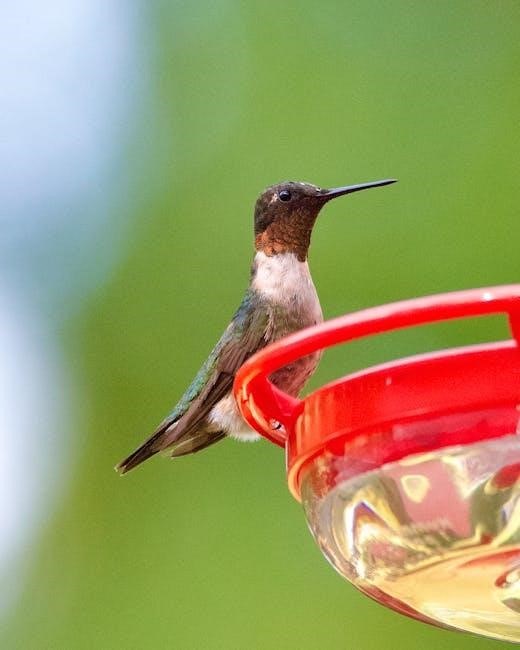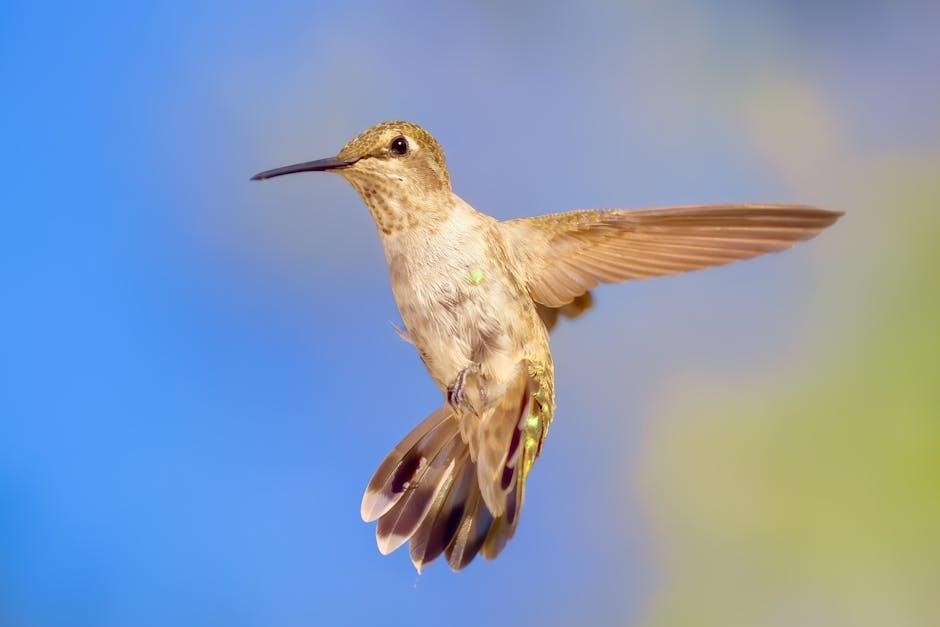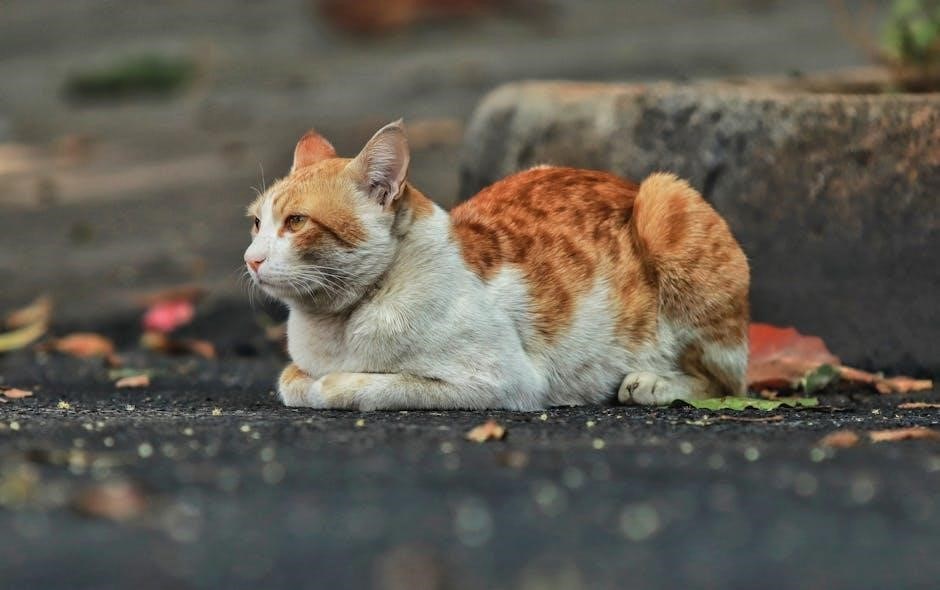Wilds of Eldraine Quick Draft offers a fast-paced, balanced format with diverse strategies and fairy tale themes. It emphasizes card synergy, adaptability, and strong early-game plays, making it ideal for BO1 matches. This guide helps players master the format, covering essential tips, archetypes, and card picks to dominate their games.
Understanding the Set and Its Mechanics
Wilds of Eldraine features the return of the Adventure mechanic and introduces Roles, enchantment tokens that enhance creatures. The set blends fairy tale themes with innovative card synergies and legendary signpost creatures tied to popular tales.
2.1 Special Mechanics: Adventure and Roles
The Wilds of Eldraine set introduces two unique mechanics: Adventure and Roles. Adventure allows creatures to transform into spells when exiled, offering dual functionality. Roles are enchantment tokens that grant abilities to specific creatures, enhancing their power. These mechanics add depth to deck-building and gameplay, encouraging strategic card synergies. Adventure cards are particularly valuable as they provide versatility, while Roles enable targeted upgrades to key creatures. Understanding these mechanics is crucial for maximizing card potential and creating effective strategies during the draft. Properly leveraging Adventures and Roles can lead to powerful combos and a strong board presence, making them central to the set’s appeal.
2.2 Fairy Tale Themes and Card Synergies
Wilds of Eldraine is deeply rooted in fairy tale aesthetics, with cards inspired by classic stories like Cinderella and Snow White. This theme extends to card synergies, where specific combinations evoke narrative-driven gameplay. For example, cards like Once Upon a Time and Gingerbread Cabin set up early-game plays reminiscent of storybook beginnings. The set emphasizes interactions between creatures and spells, creating a cohesive gameplay experience. Synergies often revolve around token generation, lifelink, and adventure mechanics, rewarding players for building around thematic cores. Cards like Faerie Miscreant and Wicked Wolf highlight how creatures can enable powerful plays when paired with complementary spells. Understanding these synergies is key to drafting effectively, as they allow players to build decks that feel both flavorful and competitive. The fairy tale theme not only enhances immersion but also drives strategic deck-building decisions.

Draft Archetypes and Strategies

Wilds of Eldraine offers diverse draft archetypes, from aggressive tribal builds to controlling decks. Strategies focus on leveraging fairy tale themes, adventure mechanics, and synergies to craft cohesive, competitive decks tailored to your playstyle.
3.1 White-Blue: Fae Tricks
The White-Blue “Fae Tricks” archetype revolves around aggressive, tempo-based strategies with a focus on Faeries and disruptive spells. This deck aims to swarm the board with evasive creatures like Gadwick, the Wandering King and Fae of Wishes, while using tricks like Brinehill Pinnacle and Charming Prince to protect your threats and disrupt opponents.
- Key cards include early-game Faeries and cheap interaction spells to maintain tempo.
- Synergies with Adventure cards like Shepherd’s Horn and Foulwhisper News enhance card advantage.
- Look for ways to enable flying and flash to maximize your creatures’ impact.
This archetype excels in aggressive starts and mid-game trickery, making it ideal for players who enjoy controlling the board with precise, disruptive plays.
3.2 Blue-Black: Milling Fae
The Blue-Black “Milling Fae” archetype focuses on leveraging the power of milling to fuel your advantage. This deck thrives on filling the graveyard with creatures and spells, which are then used to trigger powerful effects. Cards like Moonlit Manitou and Drown in the Loch shine in this strategy, as they synergize with the mill theme.
- Key creatures include Fae of Wishes and Glowing-Eyes, Glimmerglow, which benefit from having cards in the graveyard.
- Supporting spells like Into the Story and Merfolk Secretkeeper help mill while providing additional value.
- The deck aims to create a recursive engine, where milled cards can be brought back or used for card advantage.
This archetype rewards players who enjoy a mix of mill and value generation, making it a strong choice for those who can manage their library effectively and leverage graveyard synergies.
3.3 Black-Red: Goblins and Knights
The Black-Red “Goblins and Knights” archetype is an aggressive, creature-based strategy that leverages the synergy between Goblins and Knights. This deck aims to flood the board with low-to-the-ground threats and use removal spells to clear the way for your army. Goblin Piledriver and Goblin Cadets are standout performers, providing early-game pressure and scaling into the late game. Knights like Epicure of Flesh and Order of Midnight add resilience and value to the deck.
- The deck relies on cheap, impactful creatures to swarm the opponent.
- Removal spells like Searing Blood and Fatal Push are crucial for maintaining tempo.
- Sacrifice outlets and anthems can further enhance your board presence.
This archetype excels in aggressive metas and rewards players who can curve out effectively and apply consistent pressure. It’s a strong choice for those who enjoy a fast-paced, creature-centric game plan.

3.4 Red-Green: Big Creatures
The Red-Green archetype, often referred to as “Big Creatures,” focuses on dominating the board with high-powered, large-bodied monsters that can quickly end the game. This strategy relies on ramp spells and mana acceleration to cheat outsized threats into play earlier than expected. Cards like Emberwilde Captain and Wildborn Preserver exemplify this approach, offering both power and resilience.
- Utilize ramp spells like Gilded Light or Fauna Shaman to accelerate your mana development.
- Prioritize large, game-ending creatures that can single-handedly swing the matchup.
- Incorporate ways to protect your investment, such as anti-removal spells or counterspells.
This archetype is particularly effective in slower, more grindy matchups where your imposing threats can take over. However, it can struggle against aggressive decks that apply early pressure. Balance is key, ensuring you have enough early-game defense while setting up your late-game powerhouses.
3.5 Green-White: Tokens and Adventures
The Green-White archetype, centered around tokens and Adventures, leverages synergies between token-generating creatures and Adventure cards to create a formidable board presence. This strategy thrives on flooding the board with small, evasive creatures and using Adventures to bolster their impact. Cards like Lys Alana Huntmaster and Revenge of the Hunted exemplify this approach, offering both token generation and powerful effects.
- Prioritize creatures with Adventure abilities to maximize value in the early and late game.
- Look for token-generating spells like Brass Herald or Secure the Wastes to swarm the board.
- Incorporate anthem effects or pumps like Marshal’s Anthem to enhance your token army.
This archetype excels at creating overwhelming board states and synergies, making it difficult for opponents to keep up. It’s particularly strong in matchups where you can establish an early advantage and protect your board with removal or counterspells. Balance is key to ensure you have both early-game aggression and late-game staying power.
3.6 White-Black: Lifelink and Sacrifice
The White-Black archetype, centered around lifelink and sacrifice, combines life gain with creature sacrifice to create a resilient and aggressive strategy. This deck thrives on trading resources effectively, using sacrifice outlets to generate value while maintaining a strong board presence. Cards like Ayli, Eternal Pilgrim and Witch’s Cottage exemplify this synergy, offering lifelink and sacrifice interactions.
- Prioritize creatures with lifelink to maintain a healthy life total and generate card advantage.
- Incorporate sacrifice outlets like Cartel Aristocrat or Skemfar Shadowsage to generate value from your creatures.
- Look for high-impact removal spells to protect your board and disrupt opponents.
This archetype excels at controlling the game tempo, using lifelink to stabilize and sacrifice to disrupt. It’s particularly strong in matchups where you can leverage your life total to stay ahead. Be cautious not to over-sacrifice, as this can leave you vulnerable to aggressive strategies. Balance is key to ensure long-term success in this archetype.
3.7 Black-Green: Dredge and graveyard
3.7 Black-Green: Dredge and Graveyard
The Black-Green archetype, centered around dredge and graveyard synergy, leverages the power of self-mill and recursion to fuel its strategy. This deck thrives on filling the graveyard with creatures and using dredge mechanics to recur them, creating a steady stream of threats. Cards like Carrion Feeder and Shambling Husk exemplify this approach, allowing you to sacrifice creatures to generate value or recur them for repeated use.
- Prioritize creatures with low toughness to enable frequent sacrificing and dredge triggers.
- Incorporate self-mill enablers like Memory Theft or Foulwhisper News to fill the graveyard quickly.
- Look for payoff cards like Scavenging Ooze that benefit from a filled graveyard.
This archetype excels at generating card advantage through recursion, making it resilient to removal. However, it can struggle against graveyard hate, so timing your plays and protecting your strategy is crucial. Balance your deck with a mix of small creatures and larger threats to ensure consistent pressure and adaptability.
3.8 Green-Blue: Ramp and Landfall
The Green-Blue archetype focuses on ramping mana to cast powerful spells and leveraging Landfall triggers for incremental advantages. This deck thrives on accelerating mana development with creatures like Llanowar Elves or Fyndhorn Elves, enabling early access to high-impact cards. Landfall synergies are central, with creatures like Snapping Gnarlid or Earthcraft providing bonuses when lands enter the battlefield.
- Prioritize ramp creatures and spells to accelerate mana development.
- Focus on creatures with Landfall abilities to maximize land drops.
- Incorporate payoff cards like Hydroid Krasis or Prime Speaker Vannifar to utilize excess mana.
- Balanced deck construction is key, ensuring a mix of ramp, Landfall triggers, and removal.
This archetype excels at generating mana advantage and scaling into late-game threats, but requires careful timing to optimize Landfall triggers and avoid wasting mana. Proper sequencing and card selection are crucial for success.
3.9 Blue-Red: Burn and tempo
The Blue-Red archetype in Wilds of Eldraine Quick Draft focuses on aggressive strategies, combining burn spells with tempo-based creatures. This deck aims to deal direct damage to opponents while controlling the board with evasive creatures. Cards like Goblin Guide and Monastery Swiftspear shine in this archetype, leveraging cheap, impactful spells to dominate early matchups.
- Early-game burn spells like Lightning Bolt and Searing Blaze help control the board.
- Creatures with high power and evasion, such as Keldon Marauders, pressure opponents effectively.
- Tempo-gaining cards like Opt and Consider ensure consistent card advantage.
- Sacrifice outlets like Burning-Tree Emissary amplify the deck’s aggression.
This archetype excels at punishing slower decks but can struggle against heavy removal or lifegain strategies. Drafting a balanced mix of burn, creatures, and interaction is key to maximizing its potential.
3.10 Red-White: Weenie and Heroic
The Red-White archetype focuses on aggressive strategies with small creatures, often referred to as “weenies,” and utilizes the heroic mechanic to enhance their effectiveness. This deck aims to swarm the board early and grow its threats over time. Cards like Fervent Champion and Ajani’s Pridemate are staples, as they thrive with heroic triggers.
- Creatures with low toughness but high power dominate the early game.
- Heroic triggers from cards like Spirit of the Hearth and Ethereal Absolution provide late-game value.
- Auras like All Right and Dauntless Strike boost creatures and activate heroic abilities.
- Mass pump spells like Teysa Karlov can turn small creatures into threats.
This archetype excels at aggressive starts but can falter against board wipes or heavy removal. Balancing creature density with heroic enablers is crucial for success. The deck rewards players who can leverage early tempo and grow their threats consistently.

Evaluating Cards for Your Deck
Evaluate cards based on power, toughness, and mana cost. Consider synergies, removal potential, and card advantage. Prioritize cards that fit your archetype and enhance your overall strategy. Balance early-game impact with late-game relevance.
4.1 Top Commons for Each Color
Identifying the top commons for each color is crucial in Wilds of Eldraine Quick Draft. For White, cards like Inspiring Veteran and Garrison Cat provide early-game value and synergize with lifelink themes. Blue excels with Brineborn Cutthroat and Faerie Miscreant, supporting mill and flying strategies. Black relies on Rankle, Master of Pranks and Witch’s Cottage for sacrifice synergy and late-game grind. Red benefits from Torbran, Thane of Red Fell and Firedrinker Satyr, enabling aggressive starts and cost reduction. Green leverages Overwhelmed Apprentice and Llanowar Visionary for ramp and defense. These commons are versatile and often form the backbone of successful decks, ensuring consistency across drafts.
4.2 Essential Removal Spells
Removal spells are vital in Wilds of Eldraine Quick Draft, as they help control the board and disrupt opponents. For White, Banish to the Moon and Weigh Down are excellent at neutralizing threats. Blue excels with Mystical Dispute and Thief of Sanity, providing both counterspells and card advantage. Black relies on Noxious Grasp and Suffer the Slings for efficient creature removal. Red uses Flame Prophecy and Slaying Fire to deal direct damage and remove problematic permanents. Green offers Bramblefort Fink and Witch’s Cottage for synergy with sacrifice themes. These spells are often high-priority picks, ensuring you can adapt to various strategies. Prioritizing removal ensures you can protect your board and maintain tempo, making them indispensable in any successful draft deck.

4.3 Bombs and Rares to Prioritize
In Wilds of Eldraine, rare cards can often decide games due to their power and versatility. Prioritize bombs like Emergent Ultimatum in white, which offers incredible value, and The Great Henge in blue, a game-changing artifact. Black’s Gilded Light is a must-pick for its ability to disrupt opponents, while red’s Torbran, Thane of Red Fell amplifies burn spells and creature damage. In green, Nissa, Who Shakes the World dominates boards with her ability to generate massive creature tokens. Additionally, colorless cards like The Ozolith and Robber of the Rich are versatile and powerful in any deck. These rares often swing games in your favor, making them high-priority picks during the draft. Grabbing these bombs early ensures a strong foundation for your deck and puts pressure on your opponents to keep up.

Top Tips for Drafting Success

Adapt to the draft’s flow, prioritize high-impact cards, and focus on synergies. Build around your curve, signal your strategy, and manage the late game effectively. Flexibility and card quality are key.

5.1 General Drafting Tips
When drafting Wilds of Eldraine, it’s crucial to understand the set’s mechanics and themes early. Focus on picking cards that align with your chosen archetype and build around synergy. Always prioritize high-quality, versatile cards over niche or situational ones. Pay attention to the mana curve—ensuring a balance of creatures, removal, and interaction. Signal your strategy by committing to a colors early to avoid splashing. Be flexible; if the draft isn’t going as planned, pivot to a different archetype. Removal and creature spells are premium, so prioritize them highly. Avoid overvaluing rare bombs unless they directly fit your strategy. Lastly, keep an eye on the late-game potential of your deck, as many Wilds of Eldraine cards scale well into the later turns.
- Focus on synergy and archetype alignment.
- Prioritize high-quality, versatile cards.
- Balance your mana curve.
- Signal your colors early and stay committed.
- Be flexible and adapt to the draft’s flow.
- Value removal and creatures highly.
- Consider late-game potential.
5.2 Pick Order Strategy
In Wilds of Eldraine Quick Draft, understanding pick order is key to building a competitive deck. Early picks should focus on rare bombs, high-impact removal spells, and creatures that define your archetype. Prioritize cards like Faerie Imposter or Order of Midnight in the first few picks, as they set the tone for your strategy. In the mid-pack, shift toward filling out your mana curve with efficient creatures and supporting spells. Pay attention to signals from other players—passing a high-quality card may indicate their archetype. Late picks should address specific needs, such as additional removal or synergy pieces. Avoid overcommitting to a single strategy too early unless you’re confident in the signals. Adaptability is crucial, as the draft’s direction can shift rapidly.
- Early picks: Rares, removal, and archetype-defining cards.
- Mid-pack: Fill mana curve with efficient creatures.
- Late picks: Address gaps and synergies.
- Read signals to adapt your strategy.

5.3 Common Mistakes to Avoid
When drafting Wilds of Eldraine, there are several common pitfalls to avoid for optimal success. One of the most frequent errors is overvaluing rare cards early in the draft, especially if they don’t fit your archetype. Players often prioritize flashy rares over consistent commons, leading to an unbalanced deck. Another mistake is taking too many colors too early, which can result in a fragmented strategy. Additionally, many drafters overlook the importance of early removal spells, leaving them vulnerable to aggressive starts. Ignoring signals from other players, such as passed cards, can also lead to missed opportunities. Avoid drafting too many high-cost creatures without adequate ramp or support. Lastly, don’t neglect the importance of card synergy—building around standalone powerful cards without a cohesive plan often backfires.
- Overvaluing rares that don’t fit your archetype.
- Drafting too many colors early.
- Neglecting removal spells.
- Ignoring draft signals.
- Overloading on high-cost creatures without support.
5.4 Optimizing for BO1 Format
When drafting for Wilds of Eldraine in a Best-of-One (BO1) format, it’s crucial to focus on decks that can win quickly and consistently. Prioritize lower-curve decks with evasive creatures and early interaction, as games often end before the late game. Avoid over-relying on high-cost bombs or complex combos, as they may not impact the game in time. Instead, build around creatures with flying, first strike, or deathtouch to ensure a faster clock. Additionally, include a mix of removal spells and tricks to disrupt opponents’ plans. Mulligan aggressively for strong starts, as the first few turns are pivotal in BO1. Archetypes like White-Blue Fae Tricks or Red-White Weenies excel in this format due to their aggressive nature and ability to close games quickly. Always consider the archetype’s ability to race, as tempo often dictates the outcome in BO1.
Advanced Drafting Strategies
Mastering card synergy, building around powerful rares, and adapting to the draft’s flow are key. Focus on maximizing deck cohesion and leveraging overlooked cards for hidden value, ensuring flexibility in your strategy.
6.1 Card Synergies and Combos
Card synergies and combos are crucial in Wilds of Eldraine Quick Draft, as the set’s design encourages building around specific interactions. Key combos include pairing Food-generating creatures like Gilded Goose or Okta’s Advocate with cards that utilize Food, such as Goblin BBQ or Trail of Crumbs. Additionally, Adventure cards like Beanstalk Giant and Faerie Imposter offer dual-use value, making them excellent picks for synergy-focused decks.
Another powerful combo involves creatures with enters-the-battlefield effects, such as Knight of the Keep or Wicked Wolf, paired with cards like Birthing Boughs to create recursive value. Token-generating cards like Fae of Wishes and Linden, the Wayward also shine when combined with +1 counter synergies or sacrificial outlets.
Understanding these interactions allows drafters to build cohesive decks that outperform individual card power levels, making synergy a cornerstone of advanced strategies in Wilds of Eldraine.
6.2 Deck Building Tips
When constructing your deck for Wilds of Eldraine Quick Draft, focus on creating a cohesive strategy that aligns with your chosen archetype. Ensure a balanced mix of creatures and spells, aiming for a 2:1 creature-to-spell ratio. Prioritize cards with high synergy, as the set’s fairy-tale theme rewards combos and interactions. For example, pair token generators with anthems or use Adventure cards to maximize value.
Mana curve is critical; most creatures should cost 1-3 mana to maintain tempo. Include 1-2 high-impact rare or mythic bombs to close games. Removal spells are vital, so include 2-3 depending on your archetype’s needs. Lands should total 17-18, with 2-3 utility lands like Mystic Sanctuary or Foul Orchard for added flexibility.
Finally, adapt your deck to the draft’s flow. If you notice an abundance of a specific synergy, lean into it. Avoid overloading on situational cards unless your deck can consistently enable them. A well-tuned deck with clear goals will often outperform one with scattered priorities.
Drafting in Wilds of Eldraine is a captivating experience that blends fairy tale charm with strategic depth. The set’s unique mechanics, such as Adventure and Food tokens, create a dynamic environment where adaptability is key. With a wide array of archetypes, from aggressive Weenie strategies to grindy Dredge builds, players can explore diverse playstyles to suit their preferences.
Success in this format hinges on understanding card synergies, evaluating removal spells, and prioritizing high-impact rares. Drafting effectively requires balancing early picks for consistency with late-game power. Remember, practice makes perfect, and mastering the nuances of Wilds of Eldraine will elevate your drafting skills.
Ultimately, embrace the set’s whimsical themes and mechanical complexity. Whether you’re a seasoned pro or a newer player, this format offers endless opportunities for creative deck-building and thrilling gameplay. Enjoy the journey, and may your drafts be filled with magical moments and victorious matches!
